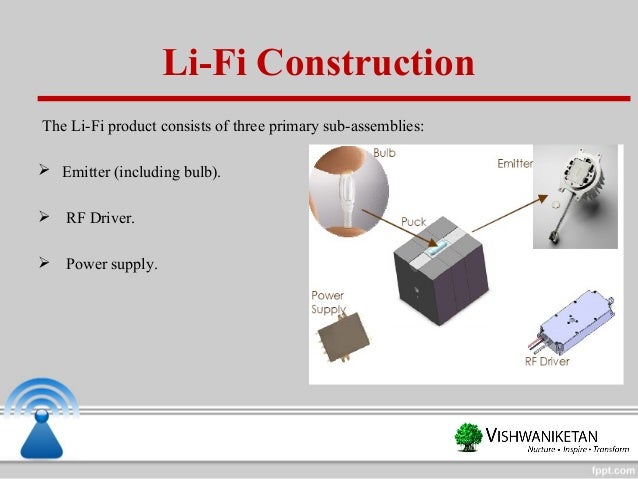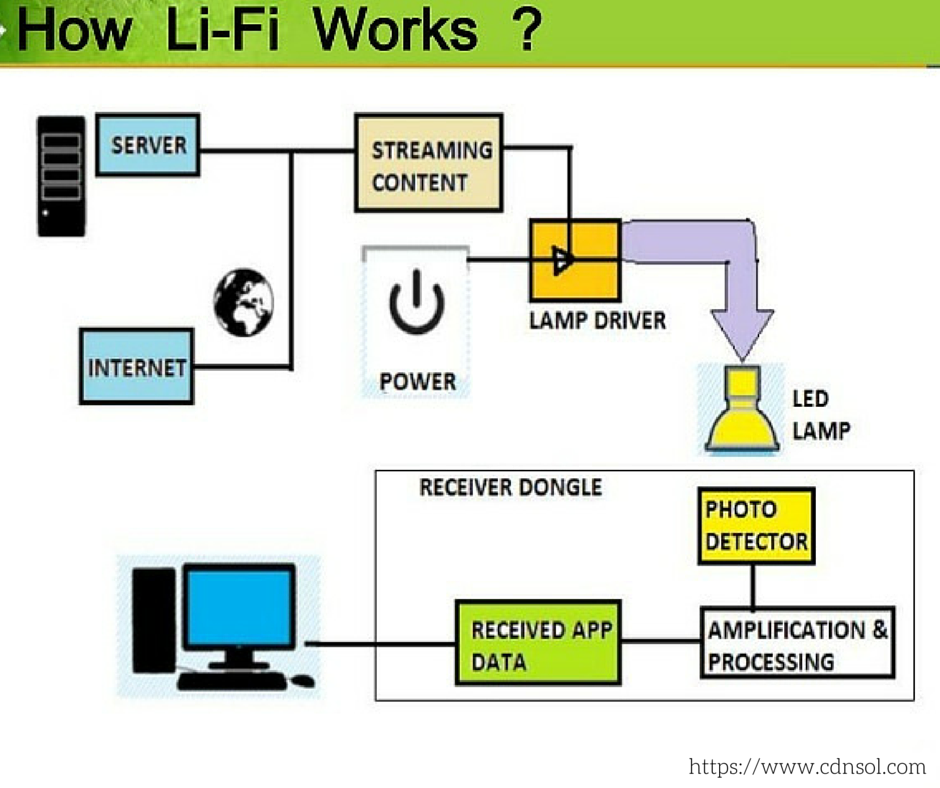Li fi wireless optical networking technology Circuit Diagram Over the years, the over-dependence on Wireless Fidelity (Wi-Fi) for data transmission necessitated the need for an alternate even reliable means of communication, hence, Light Fidelity (Li-Fi). 3. Design of a Li-Fi System. Main objective is to build a prototype using off the shelf electronic devices, establish a successful link for the transmission of digital data and provide a working Li-Fi system. To achieve this goal, open source Arduino development board is used, as shown in Figure 5. Arduino is a small microcontroller board with Title: How to Build a LiFi Communication System | Complete DIY TutorialDescription:In this video, we'll guide you step by step on how to create your own LiFi

Brief Introduction to Li-Fi. As discussed above, Li-Fi is an advanced communication technology which can be 100 times faster than Wi-Fi communication. Using this technology, the data can be transferred using visible light sources. Imagine, if you can access to high-speed internet by just using your light source. becomes critical. Li-Fi (Light Fidelity) technology addresses these challenges by using visible light for data transmission, offering high-speed communication, improved bandwidth, and secure data transfer. Unlike Wi-Fi, Li-Fi is immune to interference and offers a solution for overcrowded frequency

Fi based Text Communication between Two Arduino Circuit Diagram
Li-Fi is an emerging wireless communication technology that uses visible light to transmit data. In this instructable we make a simple Li-Fi system that can send messages from one laptop to another. This can be used to secretly communicate with your friends in a wifi free environment. The instructable is made for the Tu Delft course: TfCD

Fig. 6. Audio transfer through Li-Fi. 4.2. Communication of text signals In the Li-Fi communication, the data to be transmitted is priority converted into binary format. The LED blinks accordingly to the binary input data and this complete process is controlled by microcontroller at transmitter side. Similarly, at the receiver end, The Li-Fi instrument communication network also could enable greater capabilities to realize the Industrial Internet of Things (IIoT) and offer advanced connectivity between field devices and systems that go beyond machine-to-machine connections. The system has relatively low capital expenditure (CAPEX) and operating expenses (OPEX).
